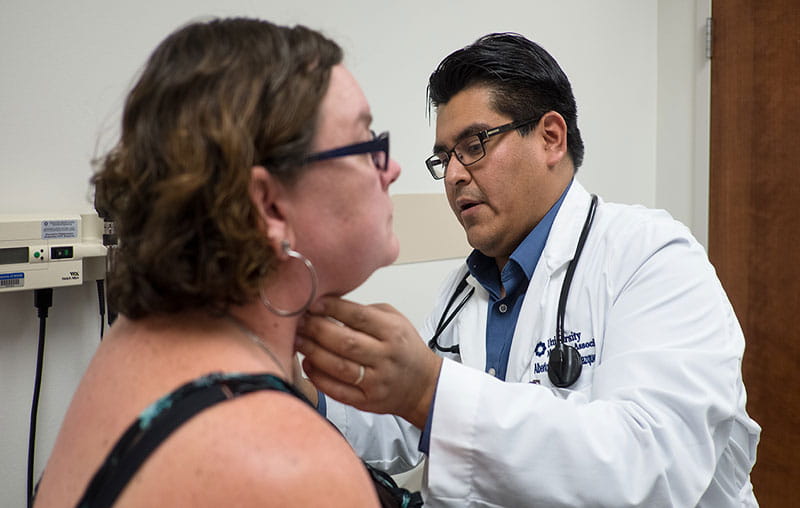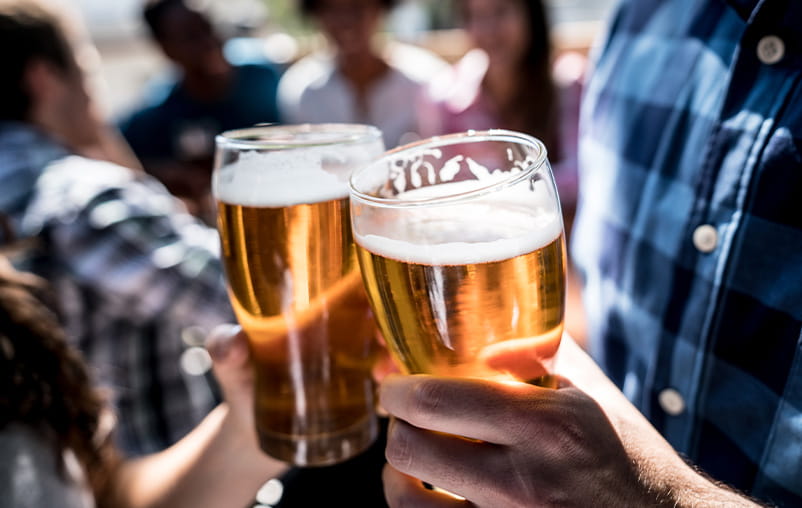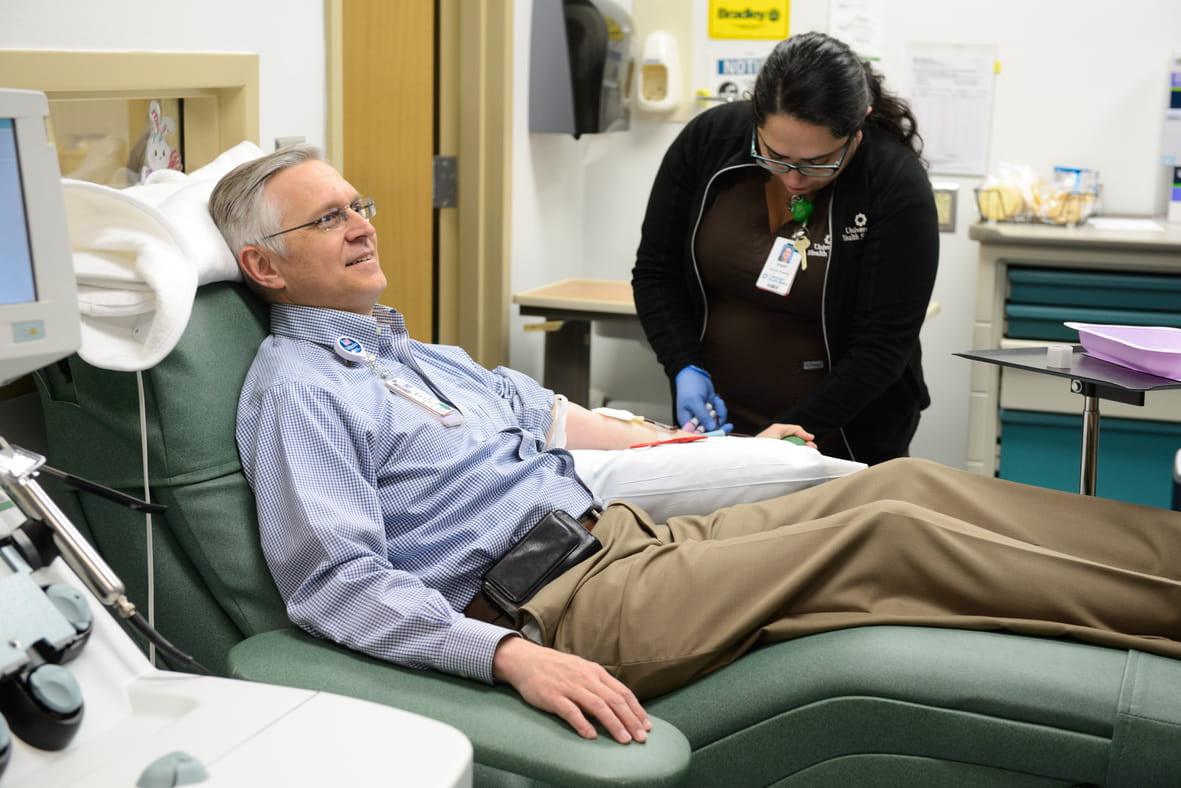Every 40 seconds, someone in the United States has a stroke, which adds up to more that more than 795,000 people having a stroke each year.
According to the American Stroke Association, stroke is the No. 5 cause of death among people in the United States—and is the leading cause of disability.
Post-stroke rehabilitation can help patients regain abilities that were lost or diminished because of the stroke.
“Most stroke patients require some level of rehabilitation,” said Dr. Sujani Bandela, a neurologist at University Health. “Some require outpatient therapies, and some require inpatient or extended rehabilitation. Inpatient is the highest level of care, including at least three daily hours of therapies for five to seven days a week.”
What Causes Stroke?
A stroke occurs when blood flow to the brain is cut off or diminished. When that occurs, the brain is deprived of the oxygen and nutrients it needs.
Within minutes, the loss of blood flow to the brain can lead to brain damage. This can result in significant disability and even death if blood flow isn’t promptly restored.
Types of Strokes
There are two types of stroke , differing in how they disrupt blood flow: ischemic stroke and hemorrhagic stroke.
Ischemic strokes occur when a blood clot forms and cuts off the flow of blood to the brain, depriving it of oxygen. Nearly 90% of strokes in the U.S. are ischemic.
Hemorrhagic strokes occur when a blood vessel in the brain weakens and ruptures. This allows blood to flood the brain, putting excessive pressure on brain tissue. While less common, hemorrhagic strokes can be just as impactful.
Stroke Risk Factors
Many people in the U.S. have at least one risk factor for stroke. Your risk of stroke is higher if you have certain common medical conditions, including high blood pressure, high cholesterol, obesity or diabetes.
Other risk factors include having atrial fibrillation, having had a stroke or a transient ischemic attack (TIA) previously, and being African American or Hispanic. While you can’t control all of the risk factors, you can lower your risk by exercising regularly, eating a diet that’s low in saturated fat and sodium, and taking other preventive steps.
Recovering After a Stroke
Any stroke can cause serious effects on the brain and the body. The brain plays a key role in how the body functions, serving as the “control board” for the nervous system.
The nervous system is responsible for receiving and interpreting information from your senses, as well as cognitive tasks such as thinking, remembering, understanding and reasoning.
When the brain is deprived of oxygenated blood during an ischemic stroke or flooded with blood during a hemorrhagic stroke, parts of the brain can be damaged, temporarily or permanently losing function.
The resulting damage depends on what part of the brain is affected . A stroke on the left side of the brain affects the right side of the body, while a stroke on the right side of the brain affects the left side of the body. Strokes near the back of the brain often affect vision.
When a stroke occurs, immediate emergency care is needed. Prompt treatment , including dissolving or removing a clot when appropriate, can help limit the extent of damage in many cases.
Once stabilized following a stroke, patients typically begin participating in rehabilitation while still in the hospital.
The Role of Post-Stroke Rehabilitation
Following a stroke, every patient’s experience is unique. Because of this, rehabilitation is personalized, including activities and therapies that are well-suited for the person’s abilities and needs. This can include multiple types of rehabilitation, with each geared toward improving abilities of a specific type.
“We have a number of different therapies available post-stroke, including physical, occupational and speech therapies,” Dr. Bandela said. “Physical and occupational therapies work on mobility and strength exercises. They can be very helpful with the healing process and preventing further stroke-related complications.”
While the physical signs of a stroke are often most visible, other health issues after a stroke may be just as challenging. Speech therapy can be particularly helpful.
“Speech therapy can be helpful for patients with the inability to say words or comprehend a conversation,” Dr. Bandela said. “This type of therapy not only helps with speech comprehension, sound production, fluency and expressing words, but it also helps with swallowing difficulties, which are one of the more common causes of stroke disability.”
During this time, it’s also important to take steps to prevent a second stroke . People who experience an ischemic stroke are at a high risk of having a second stroke. Because of that, your care team will suggest ways you can lower your risk and protect your health.
Benefits of Stroke Rehabilitation
Regardless of the type of rehabilitation required, patients who participate in post-stroke rehab benefit in tangible ways. Rehabilitation can help them regain abilities and achieve a better quality of life.
Post-stroke rehabilitation makes a big difference. A 2018 report in Practical Neurology noted that patients who began rehabilitation within seven days after a stroke experienced better long-term outcomes than those who did not, and continuing rehabilitation for at least 15 to 30 days offered significant benefits.
“Rehabilitation post-stroke helps greatly in recovery,” Dr. Bandela said. “Patients who have any sort of rehabilitation do better in terms of lesser disability than the ones who do not receive any therapies.”
Stroke Rehabilitation at University Health
You can find comprehensive stroke care and rehabilitation close to home. At University Health in San Antonio, we provide inpatient and outpatient stroke rehab, including facial nerve therapy and speech therapy.
As a certified Comprehensive Stroke Center , we are proud to offer exceptional stroke care, from the moment patients arrive at the hospital through rehabilitation.
Community Resources
Whether you receive care from us or not, we aim to connect our community to valuable resources related to stroke prevention and post-stroke care through our Institute for Public Health.
Stroke can happen to anyone.
Take our free Stroke Health Risk Assessment to help you better understand your risk of experiencing having a stroke and efforts you can make to lower your risk.





